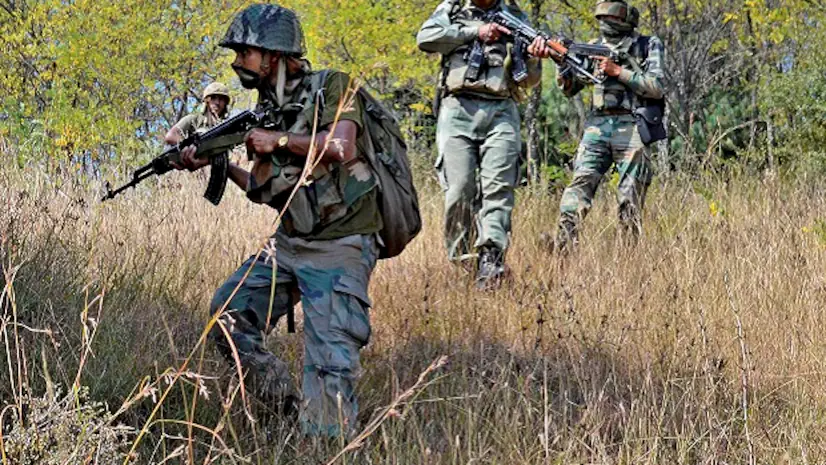Militant Attack in Pahalgam
On April 22, 2025, a militant attack in Pahalgam resulted in the deaths of 26 civilians, including 25 Indian nationals and one Nepali tourist. The Resistance Front (TRF), a militant group active in Kashmir, claimed responsibility.
India has accused Pakistan of involvement, leading to diplomatic downgrades, suspension of the Indus Waters Treaty, and revocation of Pakistani visas. Pakistan has denied any involvement and has taken reciprocal measures, including closing its airspace to Indian carriers and halting trade.
Kashmir’s Historical Background
Partition and Accession (1947)
- At the time of India's partition, princely states were given the choice to join either India or Pakistan.
- Maharaja Hari Singh of Jammu and Kashmir initially chose to remain independent.
- Following an invasion by tribal militias from Pakistan, the Maharaja signed the Instrument of Accession to India in October 1947, leading to the first Indo-Pak war.
- The United Nations intervened, resulting in a ceasefire in 1949 and the establishment of the Line of Control (LoC), dividing the region between India and Pakistan.
Article 370 and Special Status
- Article 370 granted Jammu and Kashmir special autonomy, allowing it to have its own constitution and decision-making rights in all areas except defense, foreign affairs, and communications.
- Article 35A empowered the state to define its 'permanent residents' and provide them with special rights and privileges.
- In August 2019, the Government of India abrogated Article 370, revoking the state's special status and bifurcating it into two Union Territories: Jammu & Kashmir and Ladakh.

What is Indus Water Treaty?
The Indus Waters Treaty (IWT) is a landmark water-sharing agreement between India and Pakistan, signed on September 19, 1960. Mediated by the World Bank, the treaty aims to regulate the distribution and usage of the Indus River system’s waters, ensuring peaceful cooperation between the two countries despite their strained relations.
Historical Background
- After the Partition of India in 1947, both India and Pakistan shared the Indus River system.
- Disputes over water usage arose due to the rivers flowing from India into Pakistan, impacting Pakistan’s agricultural economy.
- Several negotiations, facilitated by the World Bank, resulted in the signing of the Indus Waters Treaty in 1960.
- The treaty has withstood multiple wars and geopolitical tensions, making it one of the most durable water-sharing agreements globally.
Rivers Covered Under the Treaty
The Indus River system comprises six major rivers, which are divided between the two countries as follows:
| Eastern Rivers (Allocated to India) | Western Rivers (Allocated to Pakistan) |
|---|---|
| Ravi | Indus |
| Beas | Jhelum |
| Sutlej | Chenab |
Key Provisions of the Treaty
-
Allocation of River Waters
- India has exclusive rights over the Eastern Rivers (Ravi, Beas, Sutlej).
- Pakistan has exclusive rights over the Western Rivers (Indus, Jhelum, Chenab), while India is permitted limited usage.
- India’s Permitted Usage on Western Rivers
- Non-consumptive uses such as:
- Hydropower generation (run-of-the-river projects)
- Navigation
- Fisheries
- Agricultural usage within specified limits (defined by irrigated crop areas).
- Storage and diversion for hydroelectric projects, subject to strict technical guidelines to ensure minimal disruption of flow to Pakistan.
- Non-consumptive uses such as:
Geographical Significance
- The Indus River system is crucial for the agrarian economies of both countries.
- The rivers originate from the Himalayas and flow through India before reaching Pakistan, making upper riparian India a key player in managing water flow to lower riparian Pakistan.
- The division ensures Pakistan’s agriculture-dependent regions receive adequate water, while India can harness hydropower potential from the Western Rivers.
Recent Developments and Challenges
- Hydropower Projects and Objections
- India’s hydropower projects such as:
- Baglihar Dam (Chenab River)
- Kishanganga Project (Jhelum tributary)
- Ratle Hydroelectric Plant (Chenab River)
- Pakistan has raised concerns about potential disruptions in water flow, alleging treaty violations.
- Disputes have often required neutral expert involvement or arbitration.
- India’s hydropower projects such as:
- Geopolitical Tensions
- Following major terror attacks (e.g., Uri 2016, Pulwama 2019, Pahalgam 2025), India has considered reviewing or suspending the treaty as a strategic response.
- However, unilateral withdrawal is difficult due to:
- International legal implications.
- The treaty’s binding nature under international law.
- Climate Change Concerns
- Melting glaciers and changing precipitation patterns in the Himalayas are impacting river flow, posing new challenges for water management and treaty implementation.
Importance of the Treaty
- Ensures water security for both nations, particularly for Pakistan’s agricultural sector.
- Promotes cooperation over shared natural resources, reducing the risk of water-related conflicts.
- Acts as a model for transboundary river management globally.
Emergence and Evolution of Militancy
Political Discontent and 1987 Elections
- The 1987 state elections were marred by allegations of widespread rigging, leading to political disenchantment among the youth.
- This disillusionment catalyzed the rise of insurgent groups like the Jammu and Kashmir Liberation Front (JKLF), advocating for independence.
Rise of Islamist Militancy (Late 1980s–1990s)
- The insurgency evolved from a nationalist movement to one with Islamist overtones, influenced by global events like the Afghan Jihad.
- Groups such as Hizbul Mujahideen, Lashkar-e-Taiba (LeT), and Jaish-e-Mohammed (JeM) emerged, with alleged support from Pakistan.
- The early 1990s witnessed the exodus of Kashmiri Pandits due to targeted violence.
Human Rights Concerns
- The Armed Forces (Special Powers) Act (AFSPA) and the Public Safety Act (PSA) have been criticized for enabling human rights violations.
- Reports have highlighted issues like enforced disappearances, extrajudicial killings, and mass graves, leading to domestic and international condemnation.
International Dimensions
- Pakistan's Role: India accuses Pakistan of providing material and logistical support to insurgents. Pakistan denies these claims, labeling the militants as "freedom fighters."
- China's Stake: China controls Aksai Chin, a region claimed by India, adding another layer to the territorial dispute.
- Global Involvement: The United Nations has passed resolutions calling for a plebiscite, which remains unimplemented. Major powers have often urged bilateral dialogue between India and Pakistan.













